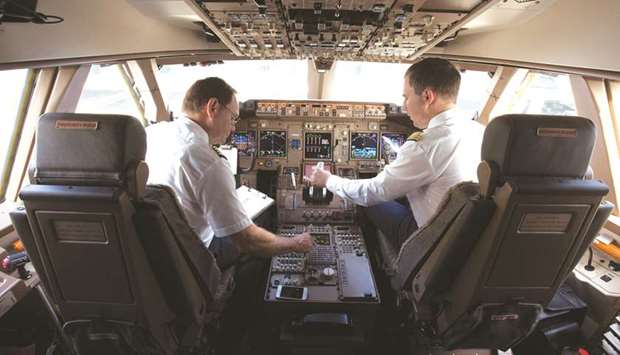An unprecedented travel boom, mainly in Asia, has spawned new budget carriers and millions of first-time fliers besides the rapid expansion of some full service carriers, but a global shortage of pilots threatens to choke off that demand.
Global air traffic is set to double in the next two decades with the biggest increase expected in the Asia-Pacific region, where almost 4bn passenger journeys are expected, according to the International Air Transport Association.
Boeing Company forecasts the region needs some 16,930 new planes and about 261,000 pilots through 2037.
That means the current fleets and the number of pilots will need to double during that period, according to the Chicago-based plane maker.
A large part of this increase is due to the growing middle-income earners, especially in Asia, where budget airlines are helping the upwardly mobile travel overseas for the first time.
“The strain is already showing,” according to Bloomberg.
Early this year, Gurugram, India, headquartered IndiGo, Asia’s biggest budget carrier by market value, decided to scrap dozens of flights after many of its pilots “exhausted their annual limit” on flying hours.
Taiwan’s China Airlines averted a crisis in February by agreeing to improve working conditions at an annual cost of almost $4mn after the pilots union, citing fatigue among other complaints, went on a seven-day strike.
The situation across the Atlantic seems to be similar. The entire commercial airline industry is facing a shortage of pilots for both cargo and passenger planes.
Estimates suggest that there will be 1,600 unfilled pilot positions in the US by 2020, according to ‘aviation voice’.
The estimated future pilot demand is going hand in hand with air transport growth and forecasts show that pilot number will more than double (between 700,000 and 800,000) in the next 20 years, ‘aviation voice’ said.
According to Boeing calculations, the biggest pilot demand appears to be in the Asia Pacific region, with a requirement for some 261,000 new pilots, while North America will require 206,000, Europe 146,000, the Middle East 64,000, Latin America 57,000, Africa 29,000 and Russia/Central Asia 27,000.
On the other hand, Airbus says the demand will double the global fleet to 48,000 aircraft and will result in a need to source 540,000 new pilots. Even with Airbus’ more conservative estimates, the gap between the demand and the supply is huge.
Recently, Boeing CEO Dennis Muilenburg told CNBC that a growing shortage of pilots represented “one of the biggest challenges” facing the airline industry.
The demand for air travel is growing so rapidly that 800,000 new pilots are expected to be needed over the next 20 years, according to Boeing’s latest forecast.
Muilenburg’s comments must be seen in the backdrop of more people flying to more places even as the number of trained pilots does not cope with the demand. The Boeing chief also estimated the number of new commercial airplanes would rise to 44,000, up from 43,000, over the next two decades.
“If you look at those 44,000 new airplanes over the next 20 years, to go along with that we need about 800,000 new pilots, 750,000 new aviation technicians and so building that talent pipeline for the future is really important,” Muilenburg said and added “That’s an area where Boeing will be making additional investments.” The ‘2019 Boeing Pilot & Technician Outlook’, an industry forecast of personnel demand, projects that 804,000 new civil aviation pilots, 769,000 new maintenance technicians, and 914,000 new cabin crew will be needed to fly and maintain the world fleet over the next 20 years.
The forecast is inclusive of the commercial aviation, business aviation, and civil helicopter industries and the demand will stem from a mix of fleet growth, retirements, and attrition, according to Boeing.
Meeting this strong demand will require a collective effort from across the global aviation industry, the US plane maker said.
Chinese carriers are reportedly exploring ways to recruit and train more talent locally to cope with the acute shortage of pilots and training facilities, amid surging demand for air travel in the country.
Currently, only a few major domestic airlines have well-established pilot training systems. Many small and budget carriers are yet to build their own pilot training mechanisms and lack training facilities like flight simulators.
Industry experts have warned that looming pilot retirements, combined with a shortage of recruits, are pinching supply in a rapidly growing aviation market.
Broad efforts by governments and airlines are therefore required to tackle pilot shortage, which will become all the more challenging in a few years.
* Pratap John is Business Editor at Gulf Times.

A Deutsche Lufthansa pilot and co-pilot sit in the cockpit of a Boeing 747-8 passenger aircraft before take off at Frankfurt Airport. Global air traffic is set to double in the next two decades, according to IATA. Boeing Company forecasts the Asia-Pacific region needs some 16,930 new planes and about 261,000 pilots through 2037.



